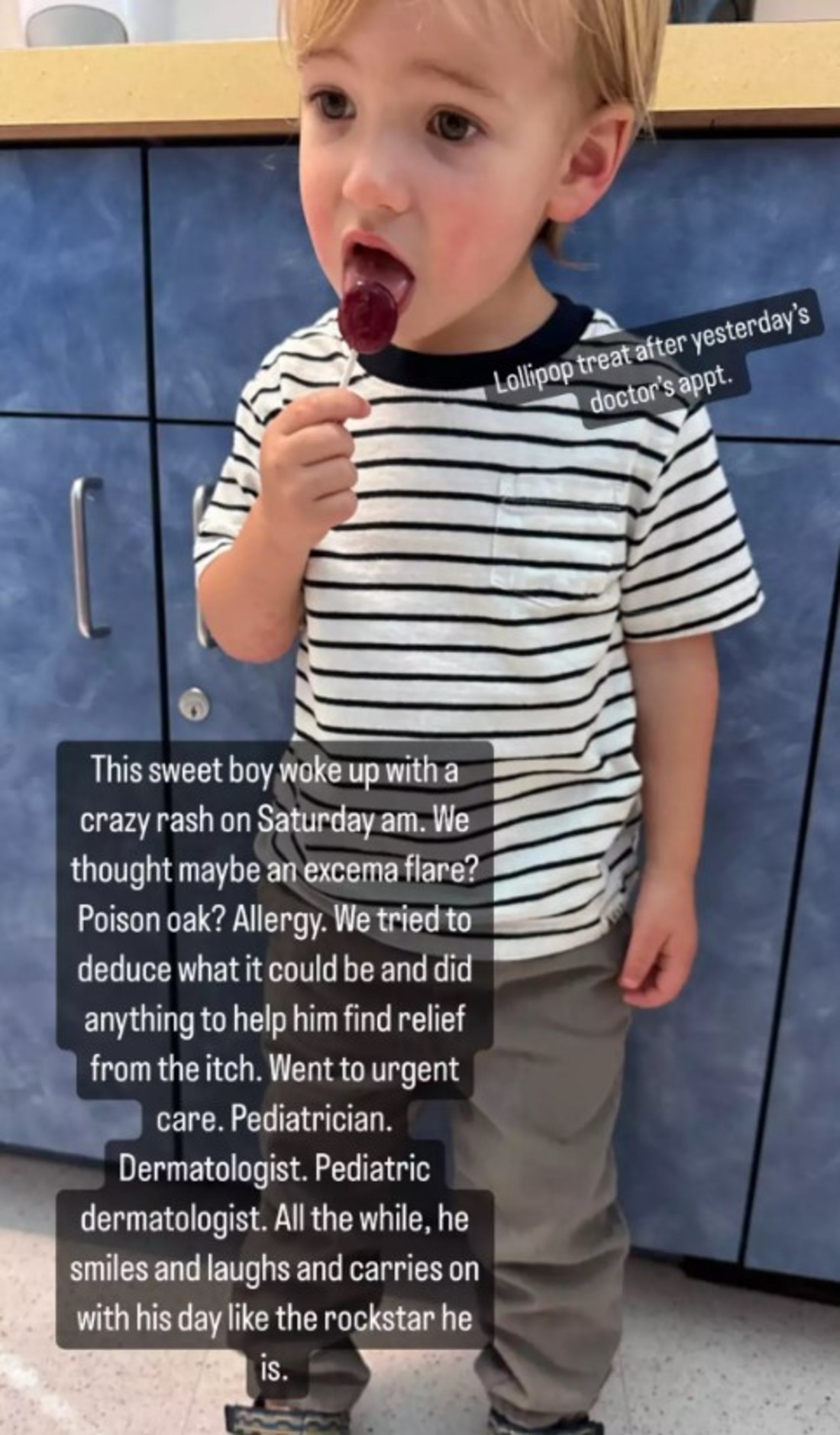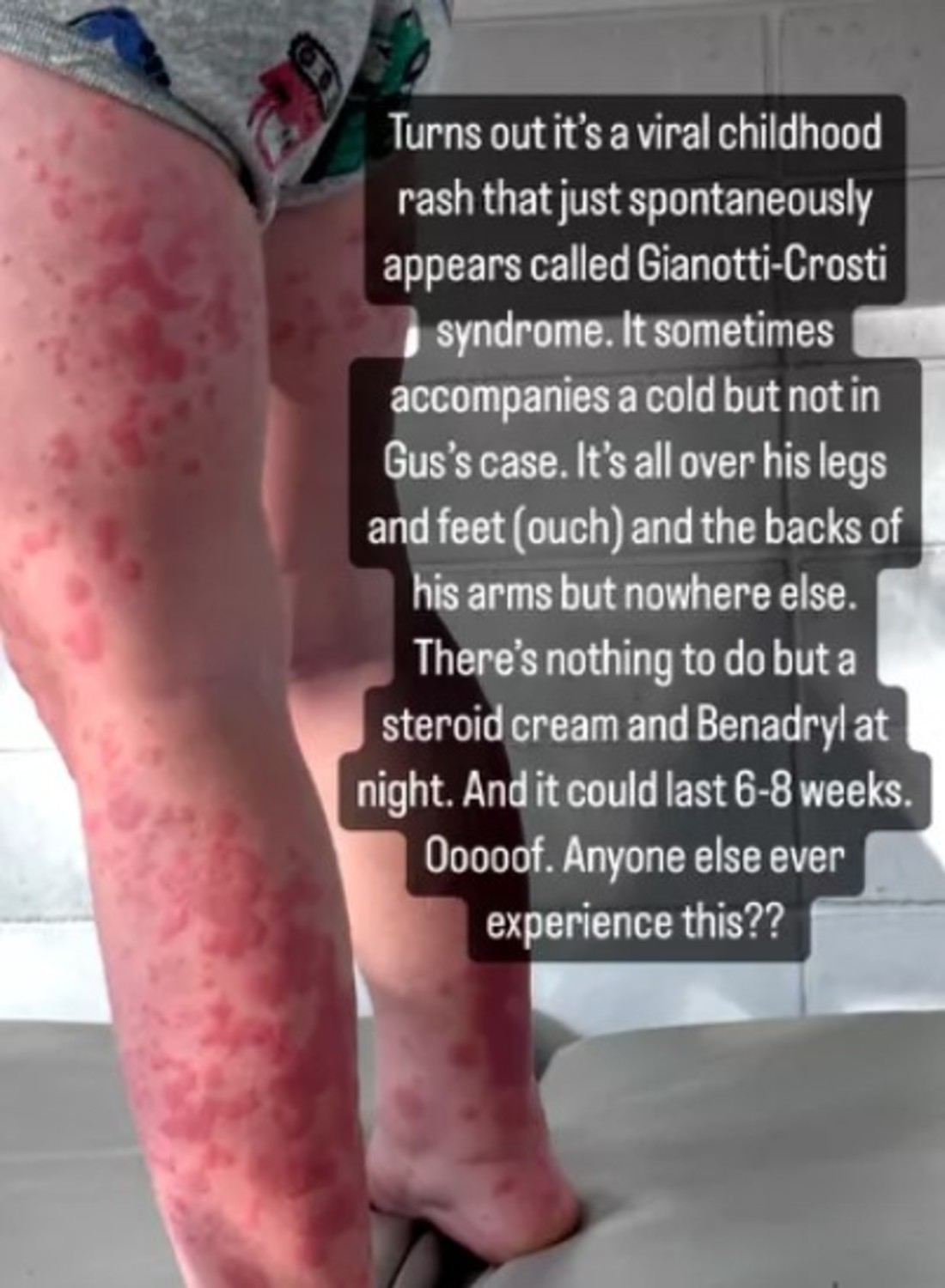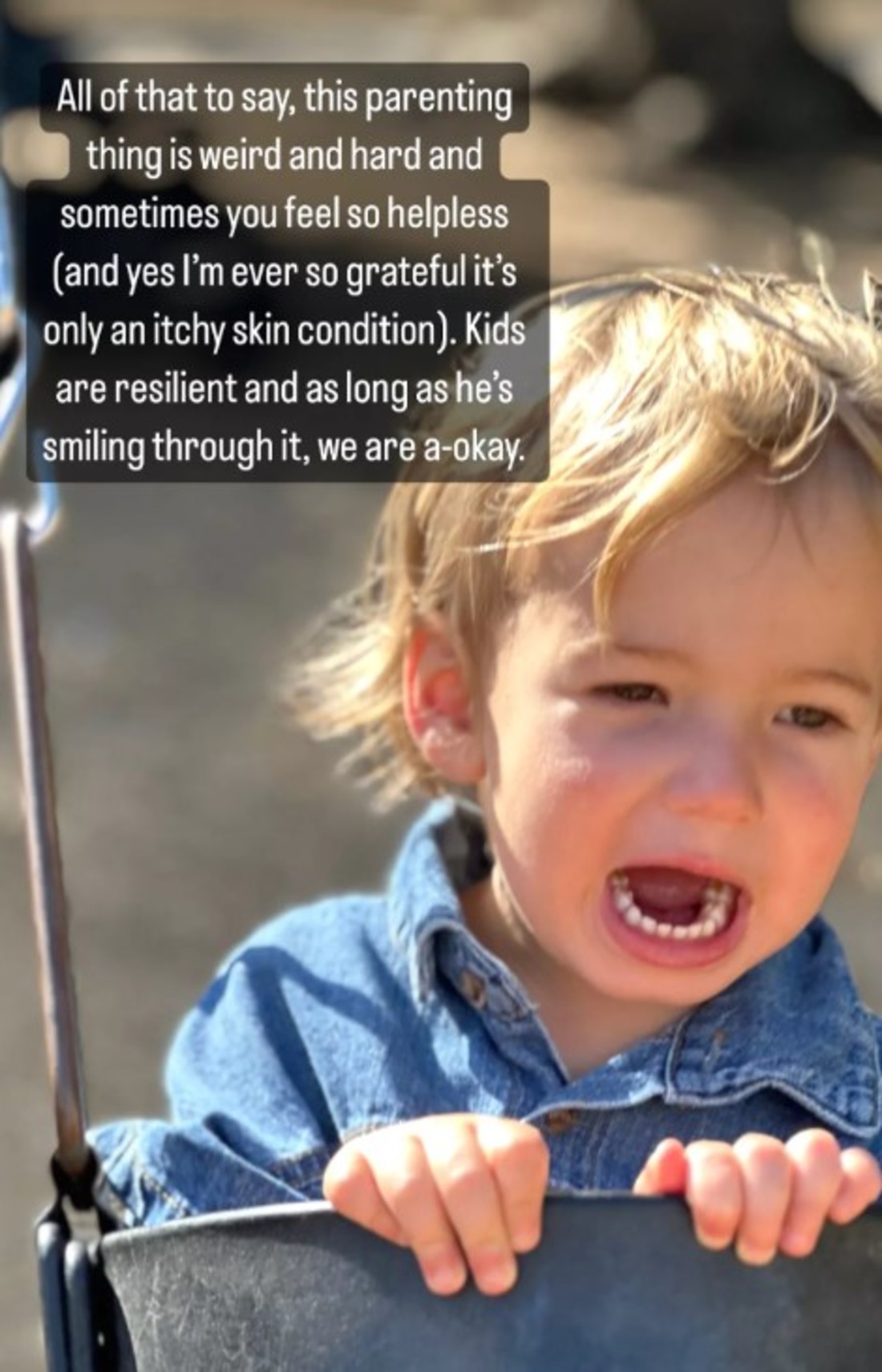Mandy Moore is sharing a health scare her family recently found themselves thrown into. The singer’s 2-year-old son, Gus, had some alarming symptoms that resulted in several doctor appointments before finally getting an answer about what was happening.
Mandy took to social media to explain what’s been going on with her son and to ask for advice.
According to Mandy, earlier this month her son, whom she shares with husband Taylor Goldsmith, woke up one morning covered in a mysterious and worrisome rash.
“This sweet boy woke up with a crazy rash on Saturday am,” Mandy shared along with a photo of Gus on Instagram Stories.
Her son woke up on July 22, and the cause of the rash wasn’t easy to determine immediately.
Not only does the rash look painful, but it’s itchy, Mandy shared.
“We tried to deduce what it could be and did anything to help him find relief from the itch,” she explained in her post on July 28.
The worried parents took Gus to several doctors to try to figure out what he was dealing with and how to help.

Continuing in Instagram Stories, Mandy explained that she had taken Gus to a dermatologist, a pediatrician, and a pediatric dermatologist to try to find answers.
Through it all, though, Gus was all “smiles and laughs like the rockstar he is,” the This Is Us alum wrote.
Finally, doctors were able to explain to Mandy what the rash was from.

“Turns out it’s a viral childhood rash that just spontaneously appears called Gianotti-Crosti syndrome,” Mandy explained.
“It’s all over his legs and feet (ouch) and the backs of his arms but nowhere else.”
According to RareDiseases.org, Gianotti-Crosti syndrome is ‘rare.’
“Gianotti-Crosti Syndrome is a rare skin disease affecting children between the ages of nine months and nine years,” the site explained.
“Major symptoms may include blisters on the skin of the legs, buttocks and arms. The disorder is usually preceded by a viral infection.”
It sounds like there’s not much that can be done other than wait and see and treat symptoms.
“Because Gianotti-Crosti Syndrome is a self-limiting disorder, the treatment of affected children is primarily symptomatic and supportive,” Rarediseases.org continued.
“For example, in some cases, the use of topical ointments or certain medications by mouth may be recommended to help alleviate mild to potentially severe itching (pruritus).”
The site explained that the skin rash and lesions “typically spontaneously resolve within approximately 15 to 60 days.”
And that’s the advice Mandy was given for Gus.

She explained that her son’s doctor suggested Gus take Benadryl and use a steroid cream. Mandy is thankful to have an answer and a treatment plan.
She finished the series with a reflection on motherhood, adding, “All of that to say, this parenting thing is weird and hard and sometimes you feel so helpless (and yes I’m ever so grateful it’s only an itchy skin condition).”
She finished her social share by writing, “Kids are resilient and as long as he’s smiling through it, we are a-okay.”




